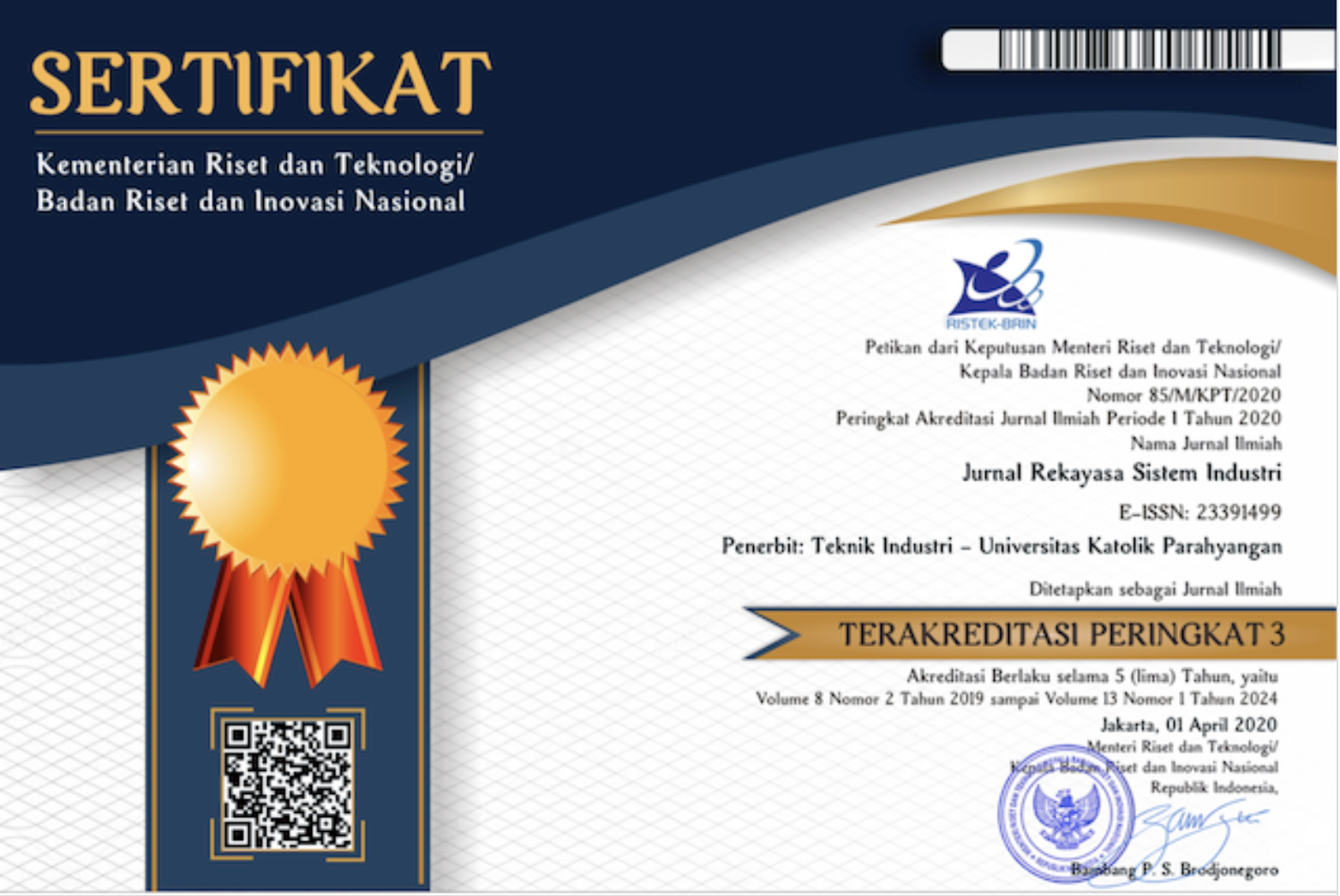Perancangan Sistem Value Chain terhadap Prospek Pengumpulan E-Waste di Bank Sampah
DOI:
https://doi.org/10.26593/jrsi.v5i1.1912.39-53Abstrak
Electronic waste (e-waste) has become environmental issue in Indonesia. Several tons of e-waste was generated each year. Available landfills will not be sufficient to accommodate e-waste that people produce. Waste bank become one of many solutions to overcome this problem. Implementation of pilot project in waste bank is needed to see the prospects of e-waste collection in waste bank. Thus, the goal of this research is to design a value chain system for e-waste collection prospect in waste bank and system simulation as the foundation for implementing a pilot project.
Simulations on 2 scenarios had been done to determine profitability of e-waste collection’s pilot project in waste bank. Based on simulation, it is known that there is profit generated from e-waste recycling process for 2 scenarios. Ranges of profit for 2 months are Rp. 7.963.879 - Rp. 40.447.047 for scenario 1 and Rp. 7.952.394 – 40.435.561 for scenario 2. If only PCB component that could be recycled, profit for 2 months still can be generated in the range Rp. 689.964 – Rp. 6.398.486 for scenario 1 and Rp. 678.478 – Rp. 6.387.000 for scenario 2. Thus, implementation of e-waste collection’s pilot project in waste bank is profitable.
Referensi
Agustina, H. (2011). ”The Challenge of E-Waste Management (Indonesian Experience).” The WEEE/E-Waste Management Workshop on Take-Back System. Osaka: UNEP..
Antara, (2015, 3 Maret). Indonesia Perlu Kerja Keras Tangani Sampah.http://www.antara.net.id/index.php/2015/03/03/indonesia-perlu-kerja-keras-tanganisampah/id/ (diakses pada 15 September 2015).
CalRecycle, (2015, 9 April). Retailer Information & Electronic Waste Recycling Fee. http://www.calrecycle.ca.gov/Electronics/Retailer/ (diakses pada 15 September 2015).
Chatterjee, S., (2012). ”Sustainable Electronic Waste Management and Recycling Process .” American Journal of Environmental Engineering, p.23-33.
Cucchiella, Federica, Idiano D’Adamo, Lenny Koh, dan Paolo Rosa., (2015). ”Recycling of WEEEs: An economic assessment of present and future e-waste streams.” Renewable and Sustainable Energy Reviews 51 ,p.263-272.
Dalrymple, I., N. Wright, R. Kellner, N. Bains, K. Geraghty, and M. & Lightfoot L. Goosey., (2007). ”An integrated approach to electronic waste (WEEE) recycling.” Circuit World, p.52-58.
Geyer, Roland, dan Vered Doctori Blass., (2010). ”The economics of cell phone reuse and recycling.” The International Journal of Advanced Manufacturing Technology, p.515-525.
Halim, Audry V., (2011). Perilaku Konsumen dan Analisis Faktor Kesediaan Penduduk DKI Jakarta Dalam Mendaur Ulang Limbah Elektronik rumah Tangga. Tugas Akhir Strata Satu Jurusan Teknik Industri , Tangerang: Universitas Pelita Harapan.
Hendrawan, Parliza., (2012, 15 April). Indonesia Hasilkan 625 Juta Liter Sampah Sehari. http://nasional.tempo.co/read/news/2012/04/15/063397147/indonesia-hasilkan-625-juta-liter-sampah-sehari (diakses pada September 12, 2015).
Porter, Michael E., (1998). The Competitive Advantage: Creating and Sustaining Superior Performance. New York: Free Press.
Printed Circuit Industry Federation., (2002). A Scoping Study End-of-Life Printed Circuit Boards. Scoping Study, London: Shipley Europe Limited.
Sterman, John D., (2002). Business Dynamics. Boston: McGraw-Hill.
Waste & Resources Action Programme., (2009). Compositional Analysis of Kerbside Collected Small WEEE. Reasearch, Suffolk: WRAP MDD009.
Womack, James P., and Daniel T. Jones., (1996). Lean thinking: Banish waste and create wealth in your corporation. New York: Free Press.
Wu, Luo XJ, Zhang Y, Luo Y, Chen SJ, and et al Mai BX., (2008). ”Bioaccumulation of polybrominated diphenyl ethers (PBDEs) and polychlorinated biphenyls (PCBs) in wild aquatic species from an electronic waste (ewaste) recycling site in South China.” Environ Int.












